
EFL · National City (Indonesia)
- Basic framework section
1, Framework section: Country elements
Indonesian National Flag
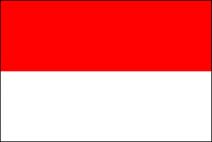
Signature: Boroyutu

[Country Name] The Republic of Indonesia (Republic of Indonesia).
[area] 1913,578.68 sq.
[population] 268 million, the world. There are hundreds of ethnic groups, of which the Javanese population is 45%, 14% Sunda, 7.5% Madura, 7.5% Malay, and the other 26%. There are more than 200 ethnic languages, and the official language is Indonesian. About 87% of the population practices Islam and is the most populous Muslim country in the world. 6.1% of the population is Christian, 3.6% are Catholic, and the rest are Hindu, Buddhist and primitive object worship.
[Capital] Jakarta (JAKARTA) with a permanent population of 10.56 million.
[Head of State] President Joko Widodo, who took office in October 2016, and was re-elected in October 2019, serving until 2024.
[Important Festival] Eid, Eid al-Adha; National Awakening Day (commemorating the founding of National Movement Indonesia in 1908), 20 May; Independence Day: August 17.
[Politics] After independence on 17 August 1945, he successively resisted armed resistance to the invasion of Britain, the Netherlands, during which it was forced to change to the Federal Republic of Indonesia and join the Federation of Netherlands and India. It was restored to the Republic of Indonesia in August 1950 and was detached from the Netherlands-India in August 1954.
[Constitution] The current Constitution is the Fourth Five-Year Constitution.
The full name of the People's Consultative Conference. The National Legislature, consisting together of the Conference of People's Representatives (Congress) and the Councils of Local Representatives, is responsible for formulating, revising, and enacting the Constitution and supervising the President. If the president is unconstitutional, he has the right to impeach and remove the president. General elections occur every five years.
The full name of the People's Congress. The state legislature, exercises the general legislative power in addition to the constitutional amendment. Congress has no power to discharge the President, and the President cannot declare its dissolution; but if the President violates the Constitution, Congress has the right to hold the President accountable.
[Local Representative Council] is a newly established legislative body in October 2004, responsible for the legislative work on local autonomy, relations between central and local governments, the division of local provinces and cities, and national resource management. Members are from 34 provincial administrative regions, 4 representatives from each district, a total of 136, and serve as agreements. There is 1 chairman and 2 vice-chairmen.
The [government] cabinet was formed in October 2019. There are 34 current office members, serving until 2024.
[Administrative divisions] There are 34 first-level administrative districts (provincial), including Jakarta capital, Yogyakarta, Yogyakarta and 31 provinces. There are 514 secondary administrative districts (county / municipal level).
The [judiciary] implements the separation of powers, and the Supreme Court is independent of the legislative and administrative bodies. The President of the Supreme Court is elected by the Supreme Court judge, and the current President Mohammed Sharefording (Muhammad Syarifuddin).
[Party] The party law enacted in 1975 allowed only three parties, namely the Professional Group Party, the Indonesian Democratic Party, Building the Solidarity Party. The party ban was lifted in May 1998. In the 2019 general election, 16 parties ran and 9 parties won parliamentary seats, and the Democratic Struggle Party became the largest party in Congress.
Indonesia is the largest economy in ASEAN. Agriculture, industry and service industry all play an important role in the national economy. 1950 ~ GDP grew only 2% annually in 1965. In the late 1960 s, the economy began to accelerate. In 1970 ~, GDP grew by 6% annually and became the middle-income countries. In 1997 it was hit by the Asian financial crisis, a severe recession and a significant currency devaluation. A slow recovery began in late 1999, with GDP with an average annual growth of 3%~4%. Economic regulation of the IMF was ended as planned at the end of 2003. After President Sushilo took office in 2004, he actively took measures to attract foreign investment, develop infrastructure construction, rectify the financial system, and support the development of small and medium-sized enterprises, and achieved positive results. His economic growth has been maintained at more than 5%. Since 2008, the Indonesian government has responded properly with the international financial crisis and maintained rapid financial growth. Since 2014, economic growth has slowed down by the global economic downturn and the Fed's monetary policy adjustment. In recent years, the Indonesian government has issued a series of stimulus policies, showing signs of accelerating recovery and maintaining rapid growth. In 2019, the Indonesian GDP was IDR 15,833.9 trillion (about US $ 1.11 trillion), up 5.02% year on year. Total trade was US $ 338.24 billion. Inflation was 2.72% throughout 2019. Affected by the COVID-19 epidemic, the economy declined by 1.26% in January to June 2020.
Indonesia Economic Growth, 2015-2019
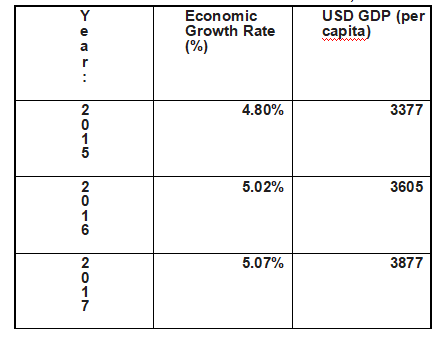

Source: Indonesia Central Bureau of Statistics
[Resources] Rich in petroleum, oil and natural gas as well as coal, tin, bauxite, nickel, copper, gold and silver. Mining plays an important position in Indonesian economy with output of about 10% of GDP. According to official statistics, Indonesia's oil reserves are about 9.7 billion barrels (1.31 billion tons), natural gas reserves of 4.8 trillion ~5.1 trillion cubic meters, proven coal reserves of 19.3 billion tons, and potential reserves can reach more than 90 billion tons.
[industry] Industrial development direction is to strengthen the export-oriented manufacturing industry. The main departments are mining, textile, light industry, etc. Tin, coal, nickel, gold, silver and other mineral output in the world at the top.
[Agriculture] Indonesia covers a national cultivated land area of about 80 million hectares, rich in cash crops, such as palm oil, rubber, etc.
[Fisheries] Fisheries resources are abundant and the government estimates a potential catch of over 8 million tons / year.
[Foreign Trade] According to the Indonesian Central Bureau of Statistics, the import and export of Indonesian goods was US $ 337.39 billion, down 8.55% year-on-year in 2019. Of these, exports were US $ 167 billion, down 7.3%; imports were US $ 170.39 billion, down 9.7%. The trade deficit was $ 3.39 billion, down 60%.
[Major Trading Partner] Except China, the United States, Japan and Singapore are the three important export markets in Indonesia. In 2019, Indonesian exports were USD 17.65 billion, US $ 15.93 billion and US $ 12.93 billion respectively, down 4.2%, 18.2% and 0.5% respectively, accounting for 10.6%, 9.5% and 7.7% of total Indonesian exports. In terms of import, China is the first source of import in Indonesia, and Singapore and Japan are the other two major sources of import countries. In 2019, Indonesia imported US $ 17.1 billion and US $ 15.61 billion from Singapore and Japan, down by 20.3% and 13.2%, respectively, accounting for 10% and 9.2% of total Indonesian imports. In addition, imports from Thailand were US $ 9.46 billion, down 13.6%, or 5.6% of total Indonesian imports.
Foreign trade plays an important role in Indonesia's national economy. The government has taken a series of measures to encourage and promote the export of non-oil and gas products, simplify export procedures, and reduce tariffs. In 1997, total foreign trade was $ 95.9 billion, declined continuously in 1998 and 1999, increased 32% driven by exports and domestic demand in 2000, decreased by the global economic slowdown in 2001 and 2002, and resumed growth in 2003 and 2004, with an average annual growth rate of above 10% from 2005 to 2007. After the international financial crisis in 2008, the total foreign trade declined and foreign trade has grown rapidly since 2009.
Recent foreign trade situation is as follows (USD billion. Source: Indonesia Ministry of Trade website):

Main export products are oil, natural gas, textiles and clothing, wood, rattan, handicrafts, shoes, copper, coal, pulp and paper products, appliances, palm oil, rubber, etc. The main imported products include mechanical transportation equipment, chemical products, automobile and spare parts, power generation equipment, steel, plastic and plastic products, cotton, etc. The main trading partners are China, Japan, Singapore, the United States, etc.
China-Indonesia Economic and Trade Relations
China plays a relatively important position in Indonesia's foreign economic and trade relations, and bilateral investment and trade cooperation has risen rapidly in recent years. The China-ASEAN Free Trade Zone was fully launched on January 1,2010. In July 2016, the upgraded protocol to the China-ASEAN Free Trade Zone officially came into effect. The degree of bilateral trade and investment liberalization and facilitation was further improved, and the development of China-Indonesia economic and trade relations is facing historic opportunities.
[Bilateral Trade] According to the Indonesian Bureau of Statistics, Indonesia and China exported USD 72.77 billion, up 0.15% year on year. Of these, Indonesia made exports to China of US $ 27.88 billion, up 2.8%, or 16.7% of its total exports, and US $ 44.89 billion from China, down 1.4%, or 26.4% of its total imports.
According to Chinese customs statistics, the bilateral import and export amount of China and Indonesia was US $ 79.7 billion, a 3.1% year-on-year increase. Among them, China's exports to Indonesia were US $ 45.64 billion, up 5.7% year on year; China imported US $ 34.06 billion to Indonesia, down 0.3%.
The main products imported by Indonesia from China are boilers, machinery and parts, motors, electrical, audio and visual equipment and zero accessories, steel, steel products, vehicles, and their zero accessories, ships and floating structures, compounds of precious metals, cotton, chemical fiber filament, knitting and crochet, organic and organic chemicals, plastics and their products, coatings, putty, furniture, lamps, rooms, vegetables, edible fruits and nuts, tobacco, tobacco, tobacco substitutes, mineral fuels, mineral oil and its products, optical, photography, medical equipment and zero accessories, rubber and its products, fertilizer, Paper and cardboard; Pulp, paper or cardboard products, ceramic products, glass and their products; Wait.
The main products exported to China are mineral fuels, animal and plant oils, plastics, rubber, chemical products, cellulose pulp and paper, wood and products, textiles and raw materials, mechanical and electrical products, base metals and products, activities, and animal products, food, drinks, tobacco, plant products, shoes, boots, umbrellas and other light industry products, optics, clocks, medical equipment, transportation equipment, etc.
Indonesian Culture
Muslims constitute 87.2% of Indonesia's population, making it the largest Muslim majority in the world. In Indonesia, kissing is called a "sniff", most Indonesians kiss by smelling each other on the cheek and in some places in Indonesia, people rub their noses in families to express affection. Indonesians do not talk publicly about sex. About half of Indonesia's population live less than $ 2 a day, leaving the gap between the rich and the poor quite large.
The Indonesian minority Hindu population is still mainly in Bali, Bali Hindu superstition continues to this day, not to let the baby's feet to the ground during the first six months of their lives to prevent the devil from harassing children.
The Indonesian Government recognizes only six religions: Islam, Hindu, Buddhism, Protestant, Catholicism and Confucianism, and every Indonesian citizen must belong to one of whatever religion, and two people of different religions shall not be legally married unless one of them is converted.
Wax dyeing printing process in Indonesia
Indonesia's batik printing process, around the skills, symbols and culture of hand-dyed cotton and silk clothing, has penetrated throughout the Indonesian life: decorative patterns with baby batik ribbons symbolize luck, and those who died have batik prints for funerals. In commercial and academic occasions, while wedding and pregnancy celebrations, as well as puppet plays and other art forms, incorporate changing types of special patterns. Pastel printed clothing even play a central role in certain ceremonies. Proud craftsmen put batik fabric printing and dyeing color: they use hot wax to draw points and lines on the fabric, hot wax can resist plants and other dyes, so craftsmen can selectively soak the ground color, soak cloth in a color, and then use hot water to remove the wax on the cloth, if you want multiple colors, repeat the process. The variety of patterns reflects a variety of influences, from Arabic calligraphy, European bouquet and Chinese phoenix, to Japanese cherry blossoms, peacocks in India or Persia. This craft is often passed down from generation to generation, it is inseparable from the cultural identity of the Indonesian people, and the Indonesian batik printing craft expresses the creativity and mental state of the Indonesian people through the symbolism of its color and pattern.
Literature and Art
In the 1660 s, the Dutch forced Indonesia into its colony, and the Indonesian national culture was destroyed. During this period, the Madaran dynasty moved to Central Java, where Javanese court literature centered on Sulakarta was once revived. Bagu Bvota III ordered Josodibloo and his son to newly compile and rewrite the past Javanese classics, and also wrote many works on history, philosophy, Islam and other aspects, since the Javanese classical literature history books called the new Javanese literature. Abdullah Bin Abdukadi Menshi, who was actively created in the first half of the 19th century, was the last well-known writer of Malay classics, and was silent for almost half a century after him.
Modern Indonesian literature was not fully developed, and soon shifted from the late medieval period to the modern literature stage. The reason for this particular phenomenon was because Dutch colonial policy blocked the development of Indonesian capitalism.
However, during this period, the Indonesian literary world was also influenced by the western trend of thought, with western translation novels appearing. Some works at the end of ancient times, such as the historical legend "Hang Duya", and the narrative poem "Simbu", showed ideological tendencies against Portuguese and Dutch colonial rule.
Indonesia's most ethnic play "Wuyang Shadow Play" originated from the ancestor worship activities of ancient Javanese people. Wuyang shadow play has a profound influence on other artistic forms. In addition to shadow play, puppets and Wuyang drama, Kamen Wuyang play, etc., people appeared in the 19th century. In addition to ayan opera, important Indonesian plays also include Gdobra opera, Le opera, Rude deer opera, etc.
The most widely popular figures in Indonesian folk music are Grang Zhang and Dangdu Te music. Gramian music is a small guitar-like Quartet plus guitar, violin, cello music, melodious euphemism, the famous Gramian songs are "Thoreau River", "Germa waist orchid", etc. Dangtu music is a kind of drum accompaniment music, which is characterized by the more smooth, passionate and unrestrained. All Indonesian ethnic groups like singing. Javanese folk songs are deep and soft, Malay folk songs are lively and lively, and Balinese folk songs are vigorous and passionate. The famous folk songs include "Star Suo", "Baby", "Salananti" and so on. Folk rap is also a popular art form, mainly singing, duet, singing, elegy and crying songs, and singing Jidong and German poetry.
2, Framework: News hotspot
(2) Indonesian food companies see the huge potential of the Chinese market
http://www.ce.cn/xwzx/gjss/gdxw/200703/09/t20070309_10639394.shtml
3, Framework Section: National · Human Geography
Republic of Indonesia (Indonesian: Republik Indonesia, English: The Republic of Indonesia), simply Indonesia or Indonesia, is a Southeast Asian country. Comprising of about 17,508 islands, it is the world's largest archipelago country, territory across Asia and Oceania, not called the "Kingdom of a Thousand Islands", is also a country with many volcanoes and earthquakes, the capital of Jakarta. Connect with countries like Papua New Guinea, East Timor, and Malaysia.
Indonesia is a presidential Republic, the current constitution for "1945 constitution", stipulates the founding of five bases (also known as "panchashira", namely, god, humanitarian, nationalism, democracy and social justice) as the basis of the country, the People's Consultative Conference for the supreme authority, the head of state, head of government and the commander-in-chief of the armed forces. From October 1999 to now, the association has made three changes to the Constitution, mainly stipulating that the president and vice president can only be elected for one consecutive term, for five years, reducing presidential power and strengthening parliamentary functions.
Indonesia is one of the most abundant biological resource countries in the world. According to incomplete statistics, there are about over 40,000 plants in Indonesia, including the most abundant medicinal plants. The forest area of Indonesia is 12000000 square kilometers, including 11200000 square kilometers of permanent forest area and 810000 square kilometers of convertible forest area. Indonesia has a forest coverage rate of 67.8%. Indonesia is rich in a variety of rare tropical tree species, such as iron, ebony, ebony and sleeves are well known in the world. Indonesia is vast and has a tropical climate for various fish growth. Indonesia has rich fishing resources, and Bagan Asia on the east coast of Sumatra is the world-famous fishing fishery.
4, Framework section: the latest information (about 10 notes)
- Professional framework section
5, Framework Section: National · Food Introduction
[Agriculture, Forestry and Fisheries] Indonesia is a major agricultural country, with a cultivated area of about 80 million hectares and an agricultural population of about 42 million people. Indonesia has unique natural conditions, humid and rainy climate, sufficient sunshine, and short growth cycle of crops. The main cash crops are palm oil, rubber, coffee and cocoa. In 2018, Indonesian gross palm oil production reached a record 43 million tons, increasing by about 12.5% year on year. As the largest archipelago country in the world, Indonesia has a coastline of 81,000 kilometers, with an area of 5.8 million square kilometers, including 2.7 million square kilometers of the territorial sea fishery area and 3.1 million square kilometers of the exclusive economic zone. Fishery resources are abundant, up to 7,000 Marine fish, the government estimated potential fishing is over 8 million tons / year, the developed Marine fishery production accounts for 77.7% of the total fishery production, the fishery resources in the exclusive economic zone have not been fully developed. China and the United States have become the largest export market for Indonesian fishing products, with shrimp, tuna and flower crabs exporting the most to the United States, and squid, cuttlefish, octopus and sea grass exporting the most to China.
6, Framework Section: Food Standards
Since 2009, the Indonesian government has imposed mandatory national standards in food, beverage, fishery and many other industries. The Indonesian Ministry's Trade has issued new rules requiring that all products, including imported products, must be accompanied by Indonesian instructions. The Indonesian Ministry of Marine and Fisheries requires 81 fishery products to meet the Indonesian national standards, and even include fishing tools, fishing and production processing procedures and microbial testing procedures in the Indonesian national standards. In 2011, the Indonesian Ministry of Industry and other government departments imposed the national standards on dozens of products, such as electric wires, electronics, auto parts, home appliances, hardware, building materials, and toys.
The Ministry of Trade has issued new rules requiring all products, including imported products, to be accompanied by Indonesian instructions.
Import requirements for halal food in Indonesia
http://www.kosherhalal.cn/news/520.html
7, Framework Section: Policy and Regulations [State Administration for Market Regulation]
7.1 What are the regulations and policies on foreign trade?
7.1.1 Trade Authority
The Indonesian government department in charge of trade is the Ministry of Trade, whose functions include formulating foreign trade policies, participating in the formulation of foreign trade regulations, dividing the management categories of import and export products, the application management of import licenses, assigning importers and allocating quotas and other affairs.
7.1.2 Trade Regulatory System
Indonesia's trade-related laws mainly include the Trade Law, the Customs Law, the Establishment of the World Trade Organization Law and the Industry Law. Other laws related to trade involve the Treasury Act, the Act against Monopoly Behavior, and the Unfair Trade Competition Act, etc.
Relevant Provisions for 7.1.3 Trade Management
With the exception of a few commodities that are limited by licenses, quotas, most of the commodities are liberalized. In the end of 2007, the Indonesian Ministry of Trade announced a single window system for import and export, which greatly simplified the management procedures.
[Import Administration] The Indonesian government mainly adopts the import administration in two forms: quota and license. The applicable quota management is mainly alcoholic beverages and direct raw materials containing alcohol, and the import quota is only distributed to approved domestic enterprises. Products applicable to license management include industrial salt, ethylene and propylene, explosives, motor vehicles, waste waste, hazardous substances, and the enterprises licensed for these products can only use them for their own production. Among them, nine categories of imported products, including carbon fluoride chloride, methane bromide, hazardous substances, alcoholic drinks, direct raw materials, industrial salt, ethylene and propylene, explosives, and their direct raw materials, waste, old clothes, are mainly applicable to automatic license management; six products including clove, textiles, steel, synthetic oil, sugar, agricultural manual tools mainly apply to non-automatic license management. In order to facilitate import, the Ministry of Trade vigorously implemented the online import license in 2009. Most of the work has been completed and the process of the import license is easier. It originally took 5 to 10 days to apply for the manual license, and it only takes 8 hours to use the online national one-stop service.
In July 2015, the Indonesian Ministry of Trade issued Regulation 48 of 2015 to amend the original import regulations, requiring importers to apply import licenses before product arrival, and the regulations will begin on 1 January 2016.
[Import Licensing System] In 2010, Indonesia began implementing a new import licensing system, dividing the existing licenses into two categories, namely general import licenses and manufacturer import licenses. The general import licenses are mainly for importers imported for third parties, and the manufacturer import licenses are mainly for importers imported for their own use or in the production process. Currently, nearly 20% of the products in the Indonesian tariff list involve import licensing requirements involving the protection of its domestic industries such as rice, sugar, salt, partial textiles and clothing products, cloves, animal and animal products, and horticultural products. Indonesia's import licensing requirements are quite complex and have a lack of transparency, about which many of the WTO members have already expressed serious concern. The Indonesian government imposed import restrictions: rice, sugar, animal, and animal products, salt, alcoholic beverages and some ozone-depleting substances. The number of imports of the above products is determined annually at the ministerial meeting of the Indonesian government based on domestic production and consumption, and is implemented specifically through the Indonesian import licensing system.
[Export Restrictions] Export goods must hold the business enterprise registration number / commercial enterprise registration word or the commercial license issued by the Technology Department in accordance with the relevant laws, and the enterprise registration certificate. The export goods are divided into four categories: controlled export goods, export goods under surveillance, strictly prohibited export goods, and export goods exempted from inspection. Controlled exports include coffee, rattan, forestry products, diamonds, and rod lead. The monitored export goods include dairy cattle and buffalo, crocodile skins (blue wet skin), wild animals, Napoleonic fish, juveniles, Napoleonic fish, palm kernels, oil and gas, pure gold / silver, steel / iron scrap (specifically from Batam), stainless steel, copper, brass and aluminum scrap. Strictly prohibited export goods include juveniles and golden arowana, raw vines and semi-finished products with raw materials from natural forest raw vines, round wood, train rails or wooden rails, saws, natural sand, sea sand, soil, upper soil (including surface soil), white lead minerals, their compounds, powder, residues containing arsenic, metals or their compounds and mainly containing white lead, precious stones (except diamonds), unprocessed rubber, raw skin, subject to state protected wildlife, iron waste (except from Batang Island) and antiques. Except for the above export goods controlled, monitored and strictly prohibited, the rest are all export goods exempted from inspection.
From 12 January 2014, the Indonesian government will ban the export of mineral ore products (currently subject to export licenses and tax controls). Mineral companies will then be required to conduct refining activities in the territory. No export of goods is subject to Article 44 of the Minister of Trade Regulations of 2012.
7.1.4 Inspection and Quarantine
[Health and Plant Health Measures] All imported food in Indonesia must be registered, and the importers must apply to the Indonesian Drug and Food Administration. The testing process is cumbersome and expensive, ranging from IDR 50,000 (about $ 6) to 2.5 million (about $ 300), and each product between 1 million ($ 120) and Indonesia 3510 million (about $ 1200).In addition, the Indonesian DFDA required an extremely detailed description of the product ingredients and processing process during the test process, which could infringe on trade secrets. These regulations put the burden on exporters.
Since 2007, Indonesia has taken stricter inspection and quarantine measures and technical requirements for fresh bulb vegetables to enhance the international competitiveness of Indonesian fresh plant products. The import inspection and quarantine requirements of plant products focus on the inspection, quarantine and technology requirements of fresh vegetables imported in the form of bulbs. In terms of inspection and quarantine, the regulation expands the certificate requirements, in addition to certificates issued by the authority of the 2005 country as the 2005 regulations. In terms of technical requirements, the regulation strengthens the investigation of pest-free areas in the country of origin and the risk analysis of plant-based quarantine pests. The above regulations have raised the export threshold of Chinese plant products to some extent.
7.1.5 Customs Management Rules and Regulations
[Management System] The basic law of the Indonesian tariff system is the Customs Act enacted in 1973. The current import tariff rate was set by the Indonesian Ministry of Finance in 1988. Since 1988, the Treasury has issued a package of "easing industrial and economic controls", including adjustments to import tariffs. The tariffs on imported products in Indonesia are divided into two general tariffs and preferential tariffs. The executive body of the Indonesian tariff system is the customs Administration under the Ministry of Finance. In order to promote import and export trade and improve the investment environment, the Ministry of Finance announced in 2009 its decision to promote and provide customs and port services 24 hours a day on the 7th in some ports.
[Tariff rate] According to the statistics of the World Trade Organization, the simple average constraint tariff in Indonesia continued to maintain at 37.1% in 2009, and the applicable tariff rate was 6.8%, including 8.4% and non-agricultural products were 6.6%, basically the same as that in 2008. Indonesia imposes no tariffs on cars, steel, and some chemical products, and limits most tariffs to around 40%. According to the Indonesia
The 2009-2012 agreement tariff form, and by the end of 2012, Indonesia will impose zero tariffs on the vast majority of 2012 Chinese imports. In 2010, Indonesia listed herbal medicines, cosmetics and energy saving lamps as special imports, and 41 products have been listed in the list. According to the regulations, these products can only be imported through five Indonesian docks, namely Buyan Bay in Medan, Tangnel Plu in Jakarta, Tannel Mars in Semarang, Tangnel Belak in Surabaya and Sukarohata Wharf in Tin River. Among them, Chayabra Wharf in Papua is a wharf for only food and drink imports. Indonesia, at the same time, raise 36 tobacco tariffs, the average 6% of four cigarettes, these four tobacco products are machine rolled cigarettes, machine white cigarettes, hand rolled / white cigarettes and filter hand rolled / white cigarettes.
In April 2013, the WTO Secretariat made its sixth trade policy review report on Indonesia, whose tariff rates declined from 2006 to 2012. Indonesia's simple average favfit
It tariff from 9.5% to 7.8%; the simple average applicable tariff rate for agricultural products from 11.4% to 9.5%; the simple average from 9.5% to 7.5%. Indonesia taxes on luxury goods for domestic production and imported products of non-essential demand at import link by customs valuation and import tariff from 10% to up to 7.5%. Export link is exempted from this tax category. In 2012, the luxury tax generated 1.7% of the total Indonesian tax revenue.
According to the China-ASEAN Framework Agreement on Comprehensive Economic Cooperation, China and Indonesia have gradually cut tariffs on trade in goods. After the completion of the China-ASEAN Free Trade Zone in early 2010, more than 90% of the import and export products in China and Indonesia achieved zero tariffs.
[Trade Restriction Policy] Since 2012, the Indonesian Ministry of Trade, Ministry of Industry and Ministry of Agriculture have issued a series of policies and regulations to restrict import and export trade that are worth paying attention to. (1) Export restrictions. In May 2012, the Indonesian Government Minister of Energy and Mining implemented Regulation No. 7 on the export of 65 mines, imposed export tax and other restrictions, and again banned the export of raw mines in 2014 and encouraged foreign investors to invest and set up smelting processing plants in Indonesia. The Indonesian government will ban mineral ore exports from 12 January 2014, which will be required to conduct refining activities in the territory. The (2) import ban. In May 2012, the Indonesian government issued Regulation No. 30 of 2012 on further regulating the import of fruits and vegetables, restricting the import of fresh vegetables and fruits by means of import licenses. In early June, we began taking trade protection measures to import fresh fruits and vegetables, reducing the eight airports and shipping ports importing the above products to four, and imposing additional restrictions on exporters. (3) Technical trade barriers. The Indonesian government stipulates more kinds of products to meet the requirements of mandatory national standards in Indonesia. In 2012, Indonesia successively issued draft standards on textile and clothing and toys for infants and children, and required relevant products to meet the requirements of SNI standards, and the manufacturer needs to hold SNI signs, otherwise it cannot enter the Indonesian market. Due to the complex SNI certification process in Indonesia, extensive information required and a long certification cycle, it brings unnecessary obstacles to trade.
8, Framework Section: Exhibition Exhibition (Food)
(1) SIAL International Food Exhibition 2020
http://www.globalimporter.net/tradeexpo-d-805901.htm
Basic Information
Name (Chinese): SIAL International Food Exhibition 2020
Name: SIALInterFOOD2020
Exhibition Date: November 11-14,2020
Exhibition Venue: Jakarta, Indonesia
Exhibition cycle: once a year
Sponsor: Gmei bo Group
Organization: Beijing Introduction International Exhibition Co., Ltd
Industry properties
Food and Beverage, Vegetable and Meat Products, Food Processing Technology
Exhibit exhibits
Food packaging machinery, materials and technology: beer, beverage, dairy products and other liquid food processing equipment, food packaging, beverage packaging, filling machinery, valves, etc.
Food & Beverage: Fruit and Vegetables, Halal Food, Organic Food, Candy, Fast Food, Dairy Products, Seafood, Meat and Meat Products, Health Food, groceries, Grain and Products, Alcoholic Beverage, No alcoholic beverages, Coffee, Tea and cocoa. Fresh and processed fruit.
Hotel Food & Supplies: Catering Technology, Technical Equipment, Instruments; Data, Communications, Information Systems, Services, Food, and Semi-Luxury, Environmental Protection, Hotel Equipment & Supply, Hotel Interior Design, Facilities Construction, Safety Systems, Health Services, Hotel Consultants
Food processing technology: Food processing and packaging technology, beverage technology, measurement and adjustment system, refrigeration and refrigeration technology
Retail and Chain: Retail technology, store equipment, product display
Food Ingredients: Food ingredients, (food additives, food chemicals, food ingredients, food raw materials). Herbal and healthy foods, (herbal and healthy foods and food supplements). Retail and franchise, (franchise and licensed).
Agricultural products, halal, organic and natural health foods.
Exhibition introduction
Takami AB Group is the host of the SIAL series food show, with over 50 years of working experience and a strong global marketing network. And SIAL Interfood as the Indonesian food * * * exhibition, has been successfully operated for 17 years. The exhibition is held annually each year, attracting a large number of professional buyers and expanding. At the same time, the exhibition has also been strongly co-organized jointly by the National Ministry of Industry of Indonesia, the National Health Bureau of Indonesia, the Indonesian National Bureau of Trade, the Indonesian Food Association, and the Baking Industry Association of Indonesia. The scale of the exhibition involves all aspects related to food and hotel, attracting visitors from all over the world. The exhibition took four days to give the merchants an excellent opportunity to negotiate business and develop foreign markets.
Size of last exhibition: 1,100 + exhibitors (27 countries): 50,000 +
Market Background
Indonesia is located in southeast Asia, across the equator, and borders Papua New Guinea, East Timor, Malaysia, and across the sea from Thailand, Singapore, the Philippines, Australia and other countries. Indonesia is the world's fourth most populous country, with a population of 230 million and more than 20 million overseas Chinese, with huge market potential. In recent years, the country has regained political stability, national harmony, economic recovery and the market. Indonesia's economy grew by 5.5% last year, a record high since the Asian financial crisis. Domas 8226, president of Indonesia Federation of Food and Beverage Entrepreneurs; Dalmawan believes that China will become an export market for Indonesian food ingredients and finished products. Food and beverage sales have risen sharply by factors such as increasing population, increasing market consumption, and rising commodity prices. He also said that Indonesia's world population power, if each consumer consumes $ 1 to $ 1.50 of food and beverage per day, the Indonesian national consumption should exceed $ 106.3 billion, and the food and beverage industry still has great room to develop! At present, the food raw materials or finished products produced in Indonesia are mainly exported to mainland China through Hong Kong, Taiwan and Singapore. Dalmawan suggested that Indonesian food and beverage companies should directly establish cooperative relations with their Chinese counterparts to better grasp China's food hygiene and safety system and packaging norms, while saving costs.
Exhibition time: 2019-11-13 to 2019-11-16
Exhibition cycle: once a year
Exhibition Country: Indonesia
Exhibition Venue: Jakarta International Convention and Exhibition Center, Indonesia
[Exhibition Introduction]
Indonesia Food Exhibition experienced more than ten years of training, successfully trained by Indonesian Ministry of Commerce and Industry and Ministry of Industry, successfully acquired by French SIAL and renamed SAIL INTERFOOD Exhibition in 2014, and will welcome the 19th Indonesian Food Exhibition (INTERFOOD INDONESIA 2019) in 2019. Thus the evolution of the history of the exhibition, it can be seen that the INTERFOOD exhibition is gradually growing, but also conforms to the trend of the market will continue to grow to become the only important local food exhibition in Indonesia in the next few years. Jakarta, as the capital of the Republic of Indonesia, is the political, economic and cultural center, and is the door for foreign tourists, businessmen and investors to enter Indonesia. This huge exhibition will gather the most powerful food processing industry, food packaging industry giants and related industry leading enterprises in Southeast Asia, and perfectly present the development trend of the food industry. The scale of the exhibition involves all aspects related to food and hotel, attracting visitors from all over the world. The exhibition took four days to give an excellent opportunity with the majority of business to discuss business and develop foreign markets.
Number of last exhibitors: 2018 is the 18th session of the exhibition, the influence is extraordinary in Indonesia! It has attracted over 1,100 exhibitors and over 50,000 professional audiences from 27 countries and regions.
Exhibit exhibits
Food & Beverage: Leisure Food, Fruit and Vegetable, Halal Food, Organic, Candy, Fast Food, Dairy, Seafood, Seasoning, Meat and Meat
Products, health food, miscellaneous, dry goods, grain and grain products, food ingredients, alcoholic beverages, non-alcoholic beverages;
Hotel Food & Supplies: Catering Technology, Technical Equipment, Instruments; Data, Communications, Information Systems, Services, Food, and Semi-Luxury, Environmental Protection, Hotel Equipment & Supply, Hotel Interior Design, Facilities Construction, Safety Systems, Health Services, Hotel Consultants
Processing technology: Food processing and packaging technology, beverage technology, measurement and regulation system, freezing and refrigeration technology
Retail and Chain: Retail technology, store equipment, product display
Halal Food: Halal Food & Drinks, Cosmetics & Drugs, Travel & Hotels, Logistics, Food & Catering Technology
9, Framework Section: Food Category
Coffee Overview:
Indonesian 18 / 19 raw bean exports were the lowest since 2003, down 29% from 6,940,000 bags in 2017 / 18 to 4,907,000 bags. Exports mainly to Russia, the EU and China all dropped sharply, as buyers turned Robusta's supplies mainly to Vietnam. During the same period, Robsta coffee prices fell 16%.
In 2019 / 20, with the upcoming harvest season in southern Sumatra, raw bean exports are expected to rebound to 6.5 million bags if pricing is more competitive. The following table is Indonesia's coffee exports in the last 10 years, ranging between 4 and 8 million bags in recent years. The 2018 / 2019 exports was at 4,907,000 bags.
Export situation to China:
Indonesia 's state-owned coffee agency PT UCC Victo Oro Prima exports 4.8 tons of coffee to China, Russia' s Sputnik news agency sputniknews reported. "Most coffee products are instant coffee, coffee extract and coffee essence," the Indonesian Ministry of Industry said in a statement. These products are mainly exported to many countries including ASEAN countries, China and the UAE, and are very popular in these countries." This is expected to inspire other coffee production companies to actively sell their products in domestic and foreign markets. The 2019 coffee product exports generated $ 610 million in foreign exchange revenue in 2019, up 5.33% from 2018.
- Framework section: Brand recommendation (> 12)
Coffee Brand:
Sumatra, Mantenen, Arabica, Sulawesi, Kopi Luwak, comparable, Balinese Kintamani Coffee, Balinese, Toraja Coffee, Aceh Gayo Coffee, Flores Bajawa Coffee
- Framework section: Enterprise recommendation (> 12)
Coffee Company:
Indonesia l.Mik Love Cat Shit Coffee Company Ltd
Adhering to the corporate principle, quality first, customer first, create a healthy coffee platform, let all walks of life for affordable prices, enjoy high quality coffee drinks and sales agency outlets in many countries. I.Mik love cat excrement coffee materials selected from Indonesia Islands, unique geographical location and climate, Sumatra Islands ecological environment is well protected, pollution-free raw forest produce high quality Arabica coffee varieties. Rain and foggy natural conditions create a perfect combination of balance and acidity. At present, love cat excrement coffee has been exported to all over the world, widely praised by consumers.
Provence Coffee Company (Pwani Coffee Company)
This is a very well known coffee acquisition company in Indonesia, mainly for Mantning coffee, and almost all the best producing regions in Indonesia have been acquired, so most of the beans produced by PWN are also unique boutique. Golden Mantning is the product of this company. After buying raw beans, multiple artificial hands will choose full and flawless beans, and finally the draft selection of good beans can be divided into golden Mantning.
III. Professional Data
- Framework section: National · Food Data
- Framework section: National · Food Data
January-September 2019 Indonesia / 2019 Global Impression http://www.zcqtz.com/news/213020.html
- The Chinese Embassy and Consulate in Indonesia
Embassy in the Republic of Indonesia
Ambassador: Xiao (Xiao Qian)
Address: JL. MEGA KUNINGAN NO.2 JAKARTA SELATAN 12950 INDONESIA
Email: chinaemb_id@mfa.gov.cn
Website: http://id.china-embassy.org
National Area Number: 0062-21
Communication Room: 5761039
Office: 5761037,5761038 (fax)
Government Office: 5761021,5761022,5761023
Consular Department: 5761026 (Certificate Business Consultation, weekdays only, 2: 00-4: 00 PM), 5761024 (Fax)
Technology Group: 5761033,5761264,5761033 (fax)
Cultural Division: 5761032,5761031,5761263 (fax)
Military: 5761030,5761029,5761046 (fax)
Business Office: 5761049,5761048,5761051 (fax)
Email address:
Research room: political@chnemb.or.id
Consular Office: consular@chnemb.or.id
Cultural Division: cultural@chnemb.or.id
Military Office: military@chnemb.or.id
Technology Division: technology@chnemb.or.id
Office: administrative@chnemb.or.id
Business Office: indococ@cbn.net.id
Business Office of the Chinese Embassy in Indonesia
Address: JI.Mega Kuningan Barat 7,Jakarta 12950,Indonesia
Tel: 0062-21-5761048,5761049,5761050 Fax: 0062-21-5761051
Website: id.mofcom.gov. cn Email: id@mofcom.gov.cn
Consulate General in Denpasa (Indonesia)
CONSULATE-GENERAL OF THE PEOPLE'S REPUBLIC OF CHINA IN DENPASAR
Consul-General: Zhu Xinglong (Zhu Xinglong)
Address: Jalan.Tukad Badung 8X,Renon,Denpasar Selatan,Kota Denpasar,Bali 80226 Indonesia
Tel: 0062-361-239001
Guarantee Call: + 6281239169767
Fax: 0062-361-239001
Website: http://denpasar.china-consulate.org/
http://denpasar.chineseconsulate.org
Email: chinaconsul_dps_id@mfa.gov.cn
WeChat official account: Bali China Consular Service; Chinaconsul-Bali
Consulate General in Medan (Indonesia)
CONSULATE-GENERAL OF THE PEOPLE'S REPUBLIC OF CHINA IN MEDAN
Consul General: Wei Qiu Wei (female) (Qiu Weiwei)
Address: Jalan Walikota No. 9, Medan 20152
Tel: 0062-61-4571232
Duty Tel: 0062-82165631079
Fax: 0062-61-4571261
Website: http://medan.chineseconsulate.org
Email: chinaconsul_mdn_id@mfa.gov.cn
Consulate General in Surabaya (Indonesia)
CONSULATE-GENERAL OF THE PEOPLE'S REPUBLIC OF CHINA IN SARABAYA
Consul General: Gu (Gu Jingqi)
Address: Jalan Mayjend. Sungkono Kav.B1/105,Surabaya
Jalan Paris Argosari V D-3,Surabaya(Visa Office)
Tel: 0062-31-5675825
Duty telephone: 08123014285
Fax: 0062-31-5674667
Website: http://surabaya.china-consulate.org/
http://surabaya.chineseconsulate.org
Email: chinaconsul_sur@mfa.gov.cn
- The Indonesian Embassy and Consulate in China
Embassy of the Republic of Indonesia in China
Embassy of the Republic of Indonesia
Office: No. 4, Dongzhimen Outer Street, Chaoyang District
Chancery: No.4, Dong Zhi Men Wai Da Jie, Chaoyang District
Tel. (Tel): 65325486-88 65325489 (Reception)
Fax, Fax: 65325368
Email: Email (E-mail):set.beijing.kbri@kemlu.go.id)
Website (Website):www.kemlu.go.id/beijing)
Consulate General of the Republic of Indonesia in Shanghai
Consulate General of the Republic of Indonesia in Shanghai
Office: Room 1611, Shanghai World Trade Mall, No. 2299, West Yan ' an Road, Shanghai
CHANCERY:Room 1611,Shanghai Mart Building,2299 West Yan'an Road,Shanghai
TEL: 021-52402321
Fax, FAX: 021-32565627
Area: Shanghai, Zhejiang, Jiangsu, Anhui, Jiangxi
DISTRICT:Shanghai,Zhejiang,Jiangsu,Anhui,Jiangxi
Consulate General of the Republic of Indonesia in Guangzhou
Consulate General of the Republic of Indonesia in Guangzhou
Office: 38th Floor, Vanke Guancheng Central Plaza, No. 365, North Tianhe District, Guangzhou, Guangdong
(Temporary office place: Room 1201-1223,2 rd Floor, West Building, East Hotel, No. 120, Liuhua Road, Yuexiu District, Guangzhou City, Guangdong Province)
CHANCERY:38F,Atlas Center Plaza,365 Tianhe Bei Road,Tianhe District,Guangzhou,Guangdong Province
(Temporary Office: Room 1201-1223,2F, West Building, Dongfang Hotel, 120 Liuhua Road, Yuexiu District, Guangzhou, Guangdong Province)
Tel. (TEL): 020-86018772
Fax, FAX: 020-86018773
Area: Guangdong, Guangxi, Fujian, Hainan
DISTRICT:Guangdong,Guangxi,Fujian,Hainan
- Economic and Trade Organization (Business Association)
China Chamber of Commerce
Name: China Chamber of Commerce in Indonesia
Address: Menara Prima,Lt. 10 Unit F-G. JI. DR. Ide Anak Agung Gde Agung Blok 6.2,Kawasan Mega Kuningan,Jakata 12950
Tel: 0062-21-2251 3548-Email: chinacham@gmail.com
Indonesia Committee of China
Address: 80 Jl. Ian Bonjol No., Ja 1 akarta 10310, Indonesia
Tel: 0062-21-39831308 Fax: 0062-21-39831307
Email: secretariat@kikt.or.id
Overview of Indonesian Chinese Chamber of Commerce, Societies and major Chinese Enterprises
- Indonesia China General Chamber of Commerce, Tel: 0062-21-5209393
- India-China Business Council, Tel: 0062-21-3910947
- CNPC Indonesia Office
- China Offshore Oil Southeast Asia Limited
- Bank of China, Jakarta Branch
7., Indonesia, Limited
- China Construction Bank (Indonesia) Corporation Limited
- Huawei Technology Investment (Indonesia) Corporation
- ZTE Indonesia subsidiary
- Indonesia Office of China Luqiao (Group) Corporation
- Indonesia Representative Office of SinoInternational Engineering Corporation
- China Ocean Group Indonesia Branch
- Sinosteel Indonesia Company Limited
- Changhong Indonesia Electrical Appliance Co., Ltd
- Trinity Indonesia Machinery Company Limited
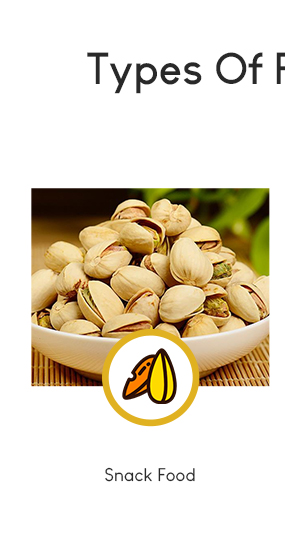 |
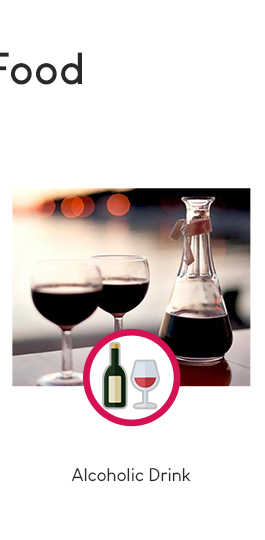 |
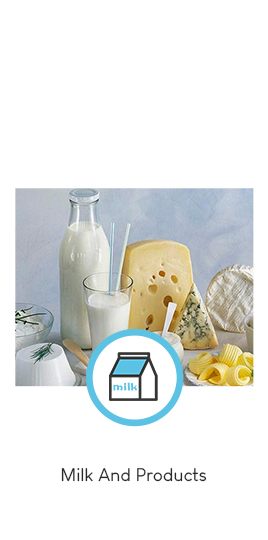 |
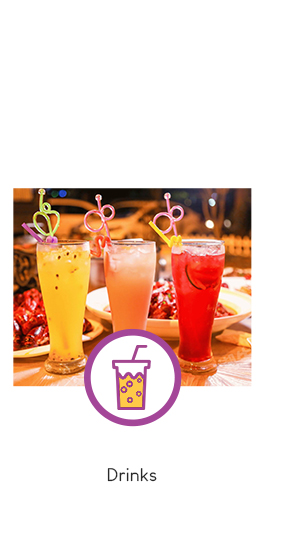 |
||
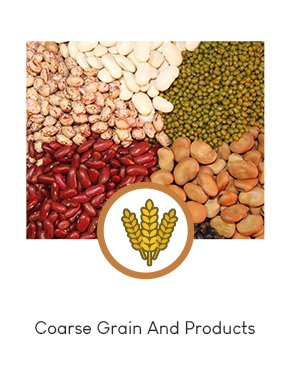 |
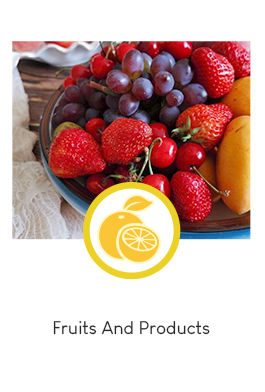 |
 |
 |
||
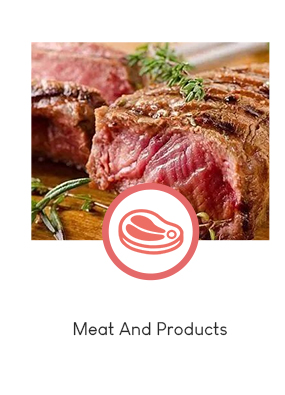 |
 |
 |
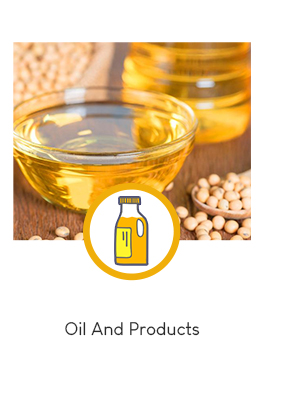 |
||
 |
 |
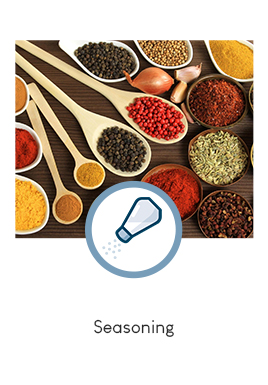 |
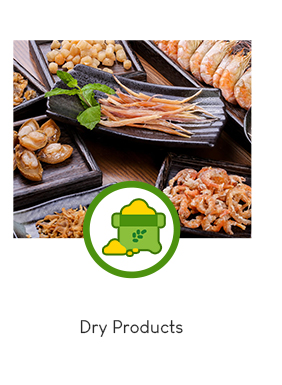 |
||
 |
|||||






